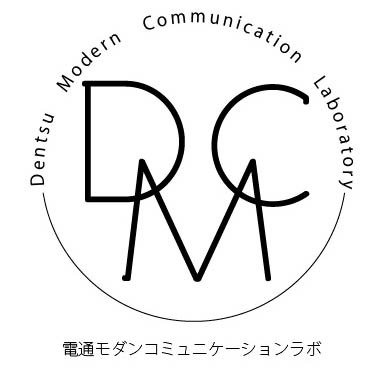Nice to meet you. I'm Yasushi Takimura, the third batter following Hirota and Kyoi in the DMC Lab book reviews. I work as a copywriter.
Having worked as a copywriter for over 20 years, I'd become completely "media-centric" in my thinking—always framing expressions around TV and newspapers. But joining this lab has gradually loosened up my brain.
Drawing on my experience with traditional advertising from the older generation, I hope to introduce books that explore the next wave of communication. True to my copywriter roots, I plan to use the words on the book's dust jacket as my starting point.
This time, I'll cover Ryo Yamazaki's "Community Design." The blurb reads: "When you stop making things, you start seeing people."
From Architectural Design to Design Connecting People
The author, Mr. Yamazaki, was originally an architectural designer. As the book jacket states, he designed landscapes and parks through the "making of things" that is architecture. His focus gradually shifted to human connections, and he now refers to himself as a "community designer."
"Community design" is the work of designing spaces and systems that empower local communities to solve their own challenges, such as depopulation or attracting tourists. Specifically, he facilitates "community development workshops" and assists with "resident-participatory master planning," connecting people and aiming for long-term solutions.
Even when buildings or parks are needed, he often entrusts the actual construction to other architects, focusing his own efforts on the "soft" aspects of community building.
Mr. Yamazaki, however, recalls that when he first started community design, "as someone who had worked designing physical structures, handing that part over to others felt like abandoning my core profession."
This is something I understand well, even though we work in different fields, as fellow creators. Advertising creative work may not be considered art, but it's hard to completely let go of the feeling that "this is work I planned and came up with the ideas for." Conversely, letting go of that feeling can sometimes lead to a dip in motivation.
Building systems that function even when you step away
However, Mr. Yamazaki says that by decisively entrusting the "crafting" to others, he gained new insights. Summed up in one phrase, it's "empathizing with the user's feelings."
When you're an architect thinking "I want to create something like this," you inevitably get pulled toward that vision. First, he thoroughly listens to the residents' stories and focuses his energy on the structure of the project – who to bring the story to, who to place at the center.
During workshops, he doesn't impose his professional ideas but patiently waits for residents to generate their own. Consequently, it's entirely possible that the conclusion might be to change only the software, not create anything new.
Eventually, I will leave the area. But if I can foster a community locally that enjoys transforming the town, the activities can sustain themselves over the long term. That's how I see it.
Reading these words reminded me of something someone else said. It was a statement from web designer Yugo Nakamura, whose lecture I attended before. The gist was: "Web design is like farming."
Unlike graphic design, he said, web design isn't finished once created; it grows together with the users from that point on. He also described it as "the feeling of creating a vessel that grows."
It's often said that user-driven communities are key in today's SNS and social media. Isn't this statement precisely capturing that essence? Reading Mr. Yamazaki's book this time, I felt that the role designers should play is the same even in real-world local communities.
There were people with similar ideas even in traditional advertising
Furthermore, I recalled hearing words with the same nuance even earlier—from our senior copywriter, Shigesato Itoi.
I can't recall the exact words, but the gist was that when writing copy, he consciously aimed to "create a playground." Copy and advertising are like proposing playthings to the world. Just as leaving a bat and ball on a field naturally sparks a game of baseball, if people start playing through the copy, those words succeed.
For example, the copy "Daytime Dads Shine" for a certain construction company was also made into a CM song themed around "working dads," featuring a track by Kiyoshiro Imawano. The lyrics "Daytime dads are a little different," "Daytime dads work up a good sweat," and "Daytime dads are real men" were apparently written with the pun in mind that they could also be read as "Nighttime dads are a little different," "Nighttime dads work up a good sweat," and "Nighttime dads are real men" (laugh).
Mr. Itoi currently runs " Hobonichi Itoi Newspaper," one of Japan's largest online communities. I feel his success online stems from an extension of the mindset he had as a copywriter: "creating a playground for everyone."
Beyond instant perfection, there's a sense of nurturing over time.
This might be a slight shift, but the concept of "creating a vessel that grows" seems to have existed for a long time. Take Sugiyama Kotaro, who created the "Sparkling First-Grader" vessel for Shogakukan's commercials and let various creators play within it.
And in this era where community building is key, this kind of sensibility is becoming increasingly important, isn't it?
Our generation has been trained in "burst power" – the ability to maximize perfection in each instant. But now, we must also develop "endurance." While "endurance" might sound grueling, it's about the feeling of growing something together with everyone. We may need to become quite conscious of how far we can break away from the traditional "thing-making" mindset.




